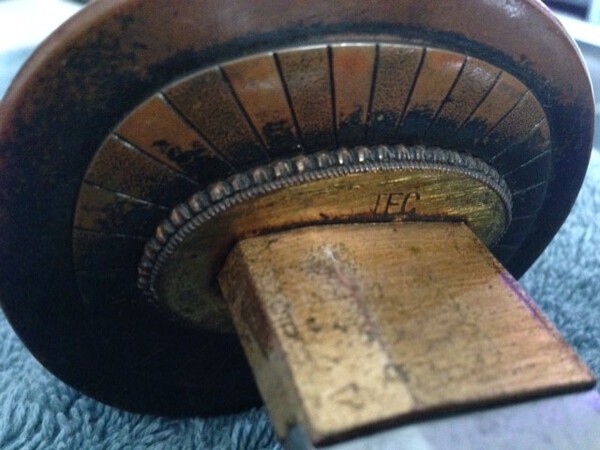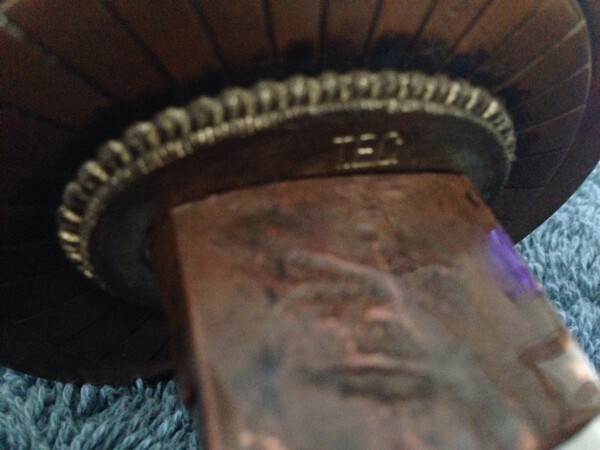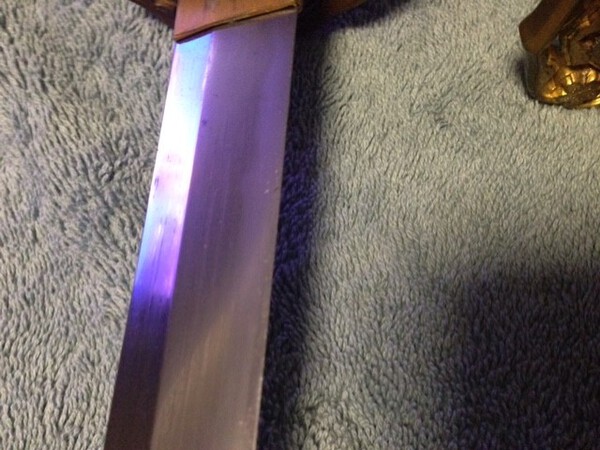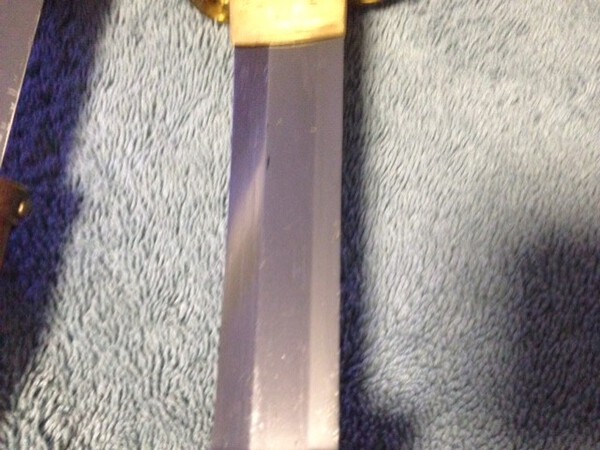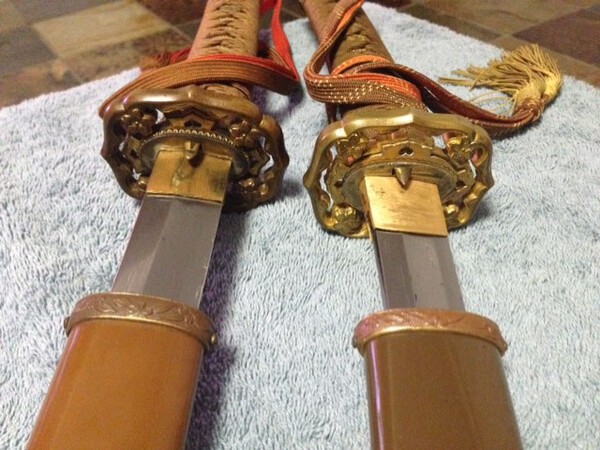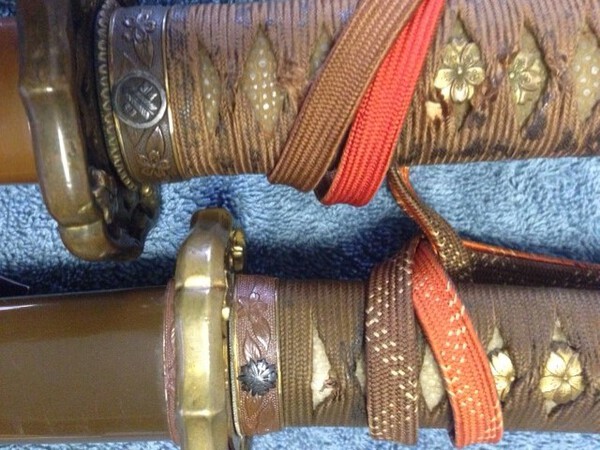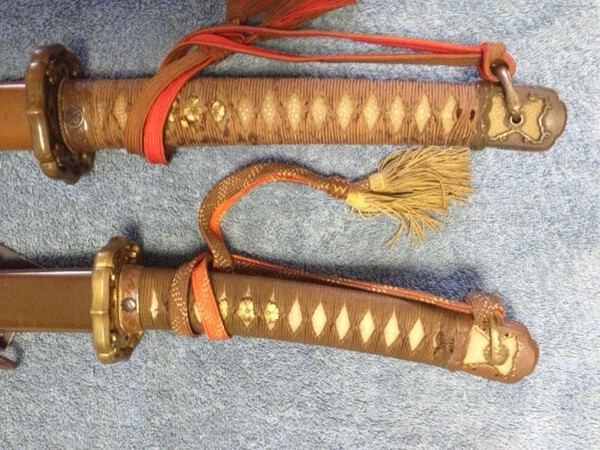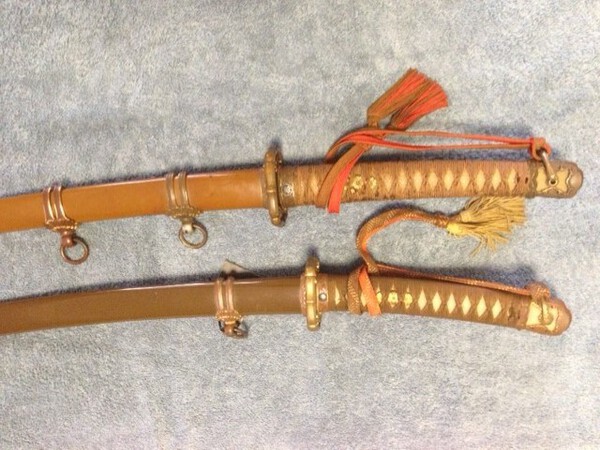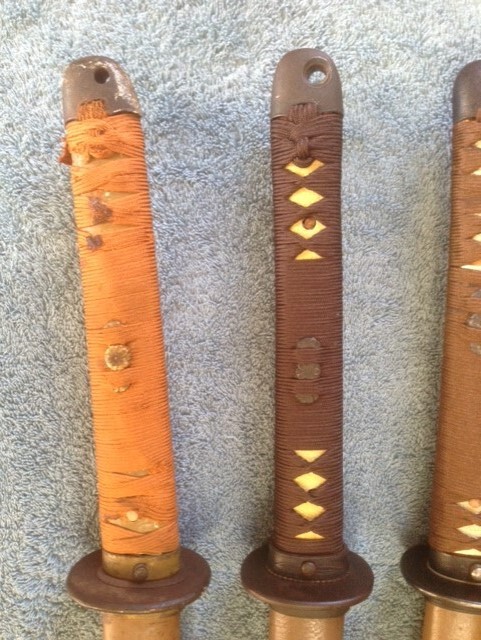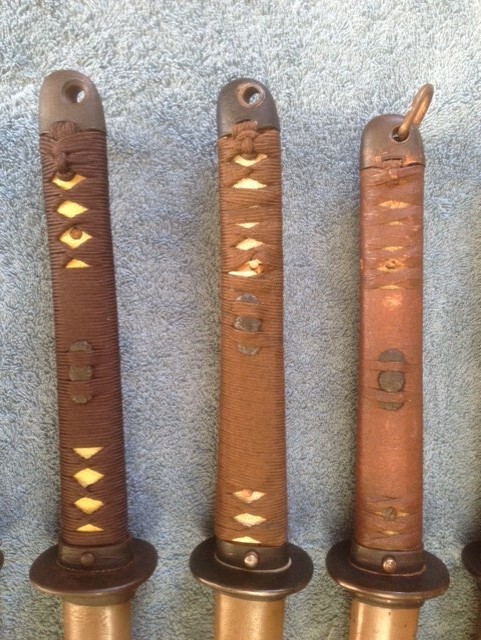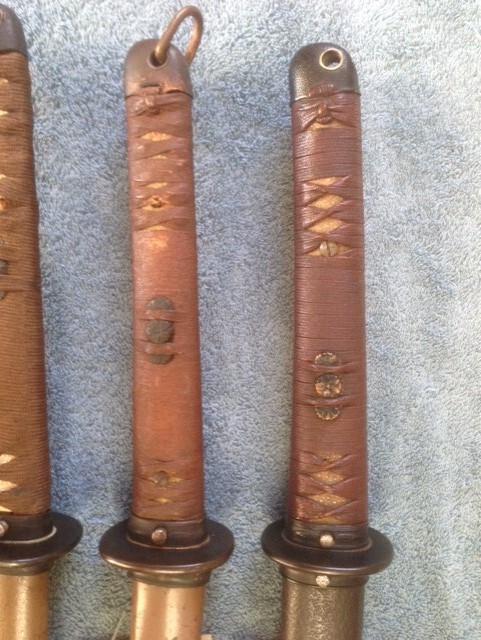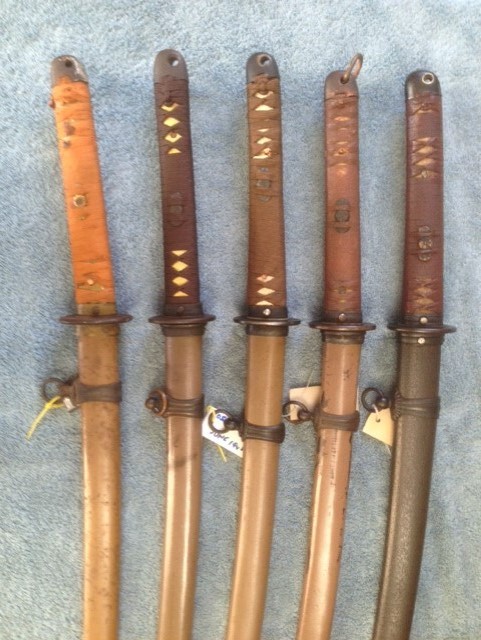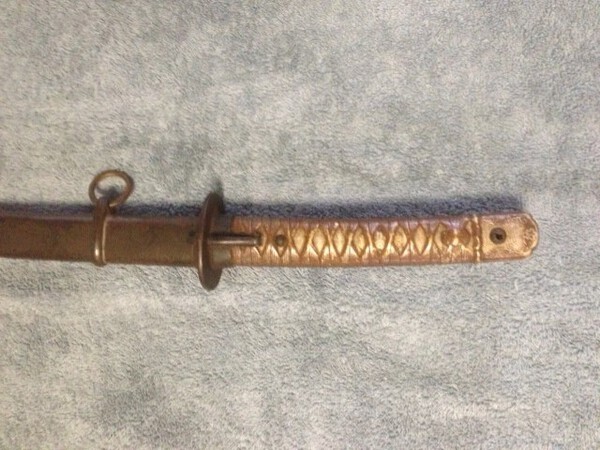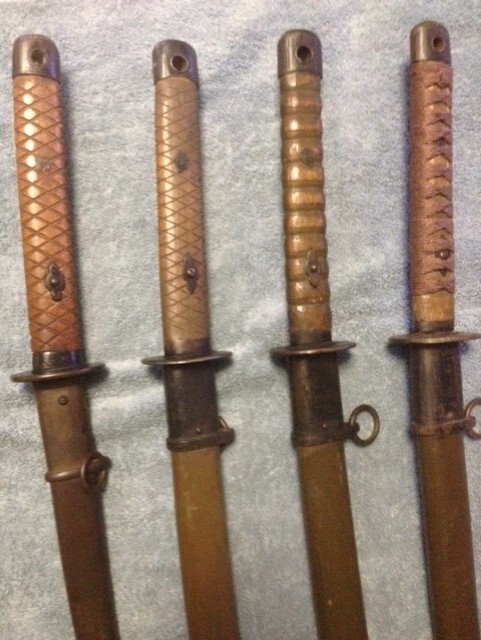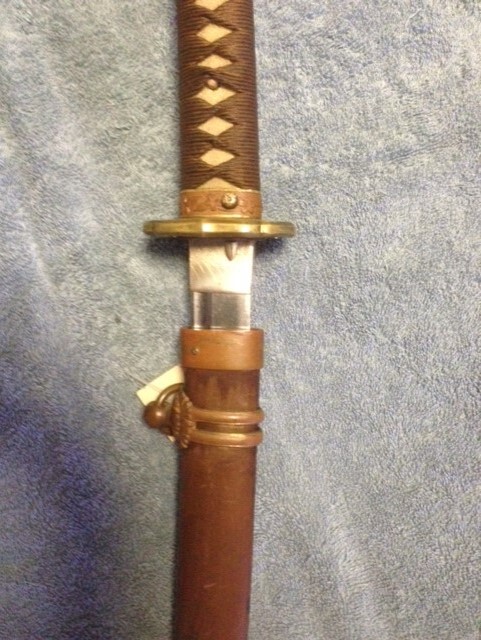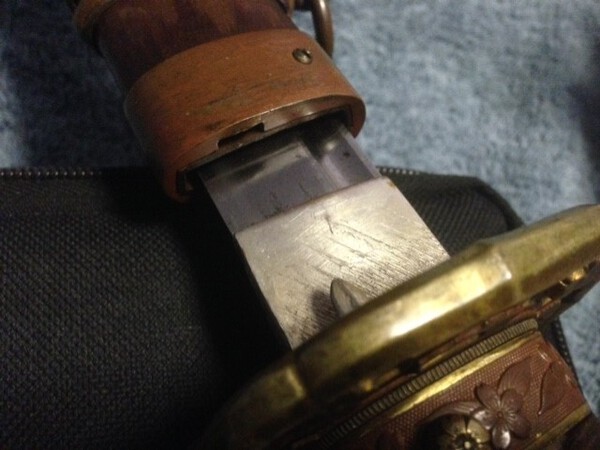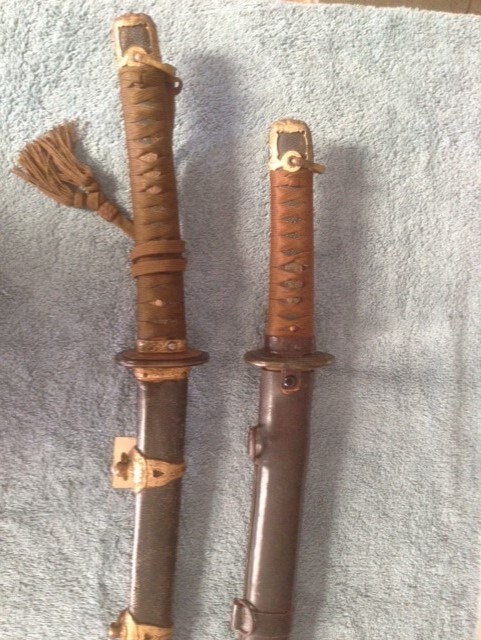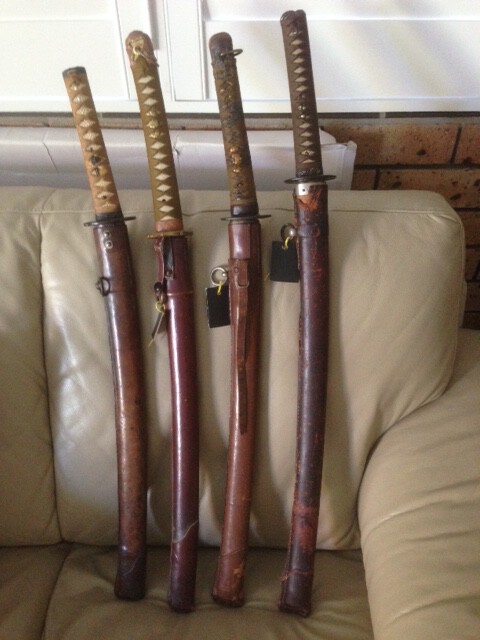-
Posts
1,905 -
Joined
-
Last visited
-
Days Won
85
Everything posted by IJASWORDS
-
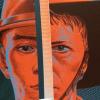
What Is The Best Ww2 Sword To Collect
IJASWORDS replied to barnejp's topic in Military Swords of Japan
Hi Barnejp, lets go back to basics, ask ten collectors the same question, and you will probably get ten different answers. Its almost like asking some one what is their favourite movie to watch and thinking it is right for you. The answer is probably, "what interests you", and then there comes price, quality and availability issues. Even your question, how do you define "best"?, is it value, investment material, historical significance, study potential, rarity, provenance.....to be honest, got all the variants you mentioned, and would not call any one best. The ugliest and worst put together swords are the late war NCO's (sorry NCO fans!), but to me and many others are much loved and treasured. I get as much kick from an $800 NCO as I do from an $8000 GENERAL sword, with a 500 year old blade, general tassel, and provenance, that I have. Its what ever "rocks your boat" at the time. Neil. -
I have searched the posts trying not to waste time asking, but couldn't find an answer. I have a number of KAI GUNTO that have two SEPPA stamps, one is the anchor stamp, the one that I need an answer on, is what looks like a TEC stamp. Would any one have any idea what this is? Neil.
-
Hi Dosh, don't be put of by the honest comments you may have interpreted from the forum contributors. All WW2 Japanese swords are of historical importance, regardless of condition. As Bruce indicated the late war handle wrapping over canvas is it in self interesting. And in my experience quite collectable due to its uncommon nature. It was a desperation measure as materials became scarce in 1944/1945. Hope you use this acquisition to spur you on to more research and the collecting of other specimens. It is a great hobby, and you meet some great and knowledgeable collectors. Neil.
-
Hi Bruce, your great photos have prompted me to ask you a question. Why on most WW2 swords in original polish, the KISSAKI end of the MUNE has a frosted (or etched?) appearance, ending at or near the YOKOTE? Neil.
-
Jean, you are correct, thanks, it is old so don't know when it was made however. It was not expensive, so I will appreciate it as a GUNTO. Neil.
-
Hi Jean, what don't you like about MEI...is it too fresh or chippy? I am a GUNTO guy, so your guidance is appreciated, Neil.
-
Hi Stephen, a lot to digest, will study carefully, a great help, thanks, Neil.
-
Hi All, I have three questions... Is the translation BIZEN SUKEMITSU. Does it look authentic. What time period would a BIZEN SUKEMITSU be made. It is in old SAYA but otherwise GUNTO mounts. It is in Wakizashi length. Thanks in advance, Neil.
-
-
-
Hi Shamsy, the general sword is a SEKI/MINO UJIFUSA OWARI blade, and is one of the loveliest balanced blades I have. Neil.
-
Hi Hamfish, thanks for the opportunity to see some NICE Gunto. Thought I would pick a couple of mine to post. Old family blades, silver mons and original tassels. Hope you like these as much as I have liked all the ones that have been posted. Neil.
-

Buy High ; Sell Low !
IJASWORDS replied to GARY WORTHAM's topic in General Nihonto Related Discussion
Hi Dr Rich, been using your reference material for years!!! Just a thank you note for the invaluable help it has afforded me. Neil. -

Buy High ; Sell Low !
IJASWORDS replied to GARY WORTHAM's topic in General Nihonto Related Discussion
Reading through all the posts, I guess you could summarise the situation as "is it a hobby or investment". I think the two are NOT compatible, unless may be with the passing of time, the market price slowly rises. You pay what you need to, or can afford to, to obtain some thing that you want. I have passed on many pieces because the price was out of my budget, I have paid some high prices on some because I really wanted them. However never with the thought of "how much could I sell this for". If you ever have to move a piece on, you must accept the going market price, and this is NOT related to the price you originally paid. You make a value judgement when you buy it, you must accept that a buyer will do that when and if you sell it. Neil. -
The type 3 is indeed a hefty formidable sword, with two mekugi one of them often a metal thread screw. The premium example normally house a blade made by a reputable smith. It has a double latch, lacquered ITO, and ray skin tsuka with a painted wood saya. The lower grade models have the single latch, plain ITO, painted heavy steel saya, dust cover or German silver SEPPA, and celluloid on the TSUKA. The blades are made by a less notable smith. These often get mistakenly called MARINE LANDING FORCE swords. Any way, these swords like all WW2 Japanese swords (regardless of the sword smith), should be cared for and preserved. Other than oiling, any abrasive cleaning is NO NO! Neil.
-
Hi Bruce, your comments about compartmentalising things are correct. You can attain a more or less complete "set" of NCO's without too much pain. I love NIHONTO, but where do you start, where do you stop? The sword smith, the school, the era, the province? And then it is hard to stop at one, or two or ????? Swords are addictive, and I'm an addict. OK, I have some NIHONTO, but the collecting is not focussed, this is one reason that I focussed on NIHONTO in GUNTO mounts. It confines you to a field that is compartmentalised. Neil.
-
It took me a few years to appreciate them for what they are, but the humble NCO with its machine made blade and hurriedly manufactured fittings are things of beauty to be preserved. The urgency of IJA sword manufacture in 1944-1945 with diminished raw materials, produced in my opinion, swords that show enormous Japanese focus yet practical flexibility and ingenuity. OK, they are not NIHONTO, but they were produced in a time of desperation for a very real purpose. Holding one of these, I often reflect on the soldier that carried it. And today we have the privilege to own it, or at least ensuring they are available for future generations to appreciate. Any way, they take pride of place in my collection. Neil.
-
-
It is always interesting finding oddities amongst the GUNTOS you collect. As a wise man said, nothing would surprise him what is found on WW2 swords. Got this KOTO blade in a type 98 outfit, with wooden scabbard. The sword is equipped with the standard 98 TSUKA latch. But the throat of the scabbard is plain copper, definitely machine made, and the wood work inside and out fits perfectly. Is this a prototype? This is the one and only I have seen. Also because it has no decoration, is it designed to be hidden under a leather cover? Does this then mean then that the sword then had a latch, fully intending to be covered by a leather cover, where other 98's were retrofitted with combat covers? Neil.
-
Hi Tim, the flame colours you saw a school in the Bunsen Burner were the coloured oxide products in the oxidizing part of the flame. Jean is correct, normally to alloy iron/steel, foundries add "master alloys" like ferromanganese or ferrosilicon, where the alloying elements are already combined with iron, and therefor melt and combine easier. BUT, alloying elements affect heat treatment, work ability and welding, all of which are important in the NIHONTO manufacturing process. Carbon hardens iron into steel, by entering the irons grain structure. Too much carbon makes iron brittle. My love for Japanese swords was ignited as a student metallurgist, studying iron/steel and seeing what the Chinese and Japanese did a thousand years ago with hammer welding and differential heat treatment. Took Europe centuries to even come close to the technology. I am sure many books have been written about the subject. Neil.
-
May be this is a question for NIHONTOPHILES, but certainly applies to GUNTO. There seems to be no "standard" with regard to the MENUKI (or TSUKA ornament) placement. Some are left side low, some swords are right side low. Is the placement optional/different for left handed owners/or just random? Only on NCO swords have I seen consistency, and they were repetitiously cast in moulds. Neil.
-
Sorry forgot, name is Neil. Notice colouration is in voids exposed to oxygen, where as broken surface is silver. Neil.
-
For my sins, I have a degree in metallurgy (the science of metals). Ferrous materials may show differing surface colours as combination of heat and oxygen.
-
Hmmmm, got a short KAI Gunto (see next to regular KAI), must be from a submarine crew member? Not much space in a SUB!! Neil.
-
Hummm, indeed!! I've got a few swords of cutting edge length 21 inches. All old blades. There are certain sellers on ebay that would call them "tankers, pilots, crew" swords. I find this hard to believe. Neil.



